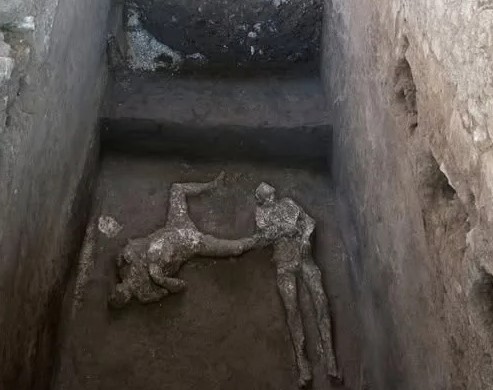Few places in the world capture the imagination quite like Pompeii, the ancient Roman city that vanished almost overnight beneath the ash of Mount Vesuvius in 79 CE. Preserved for centuries under volcanic debris, Pompeii offers a unique time capsule of everyday Roman life—from architecture and artwork to food, household items, and even the very people who lived there.
The bodies uncovered in Pompeii’s ruins have become among the most famous archaeological discoveries in history. They provide both a scientific resource and an emotional connection to the past, reminding us of the fragility of human life and the power of natural forces. Today, they remain central to ongoing debates about archaeology, preservation, and cultural heritage.
The Day Pompeii Stood Still
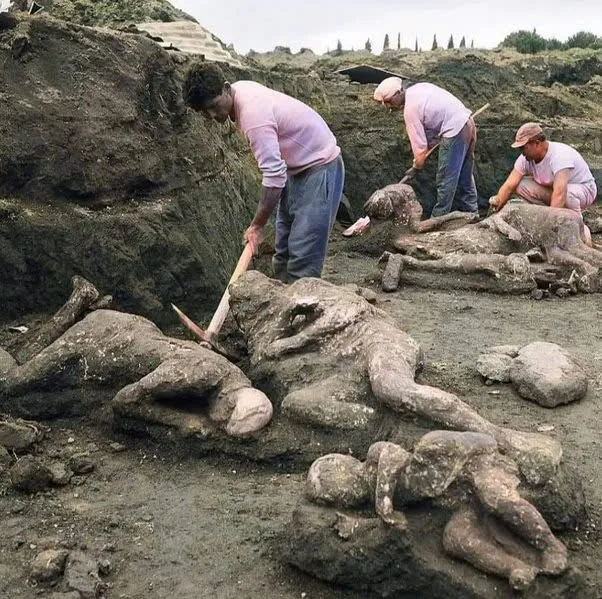
On a summer morning in August 79 CE, life in Pompeii appeared to continue as usual. Shops bustled, forums echoed with conversations, and families prepared meals in their homes. Without warning, Mount Vesuvius erupted violently, sending ash, pumice, and debris high into the atmosphere. Ancient sources such as Pliny the Younger described the event as turning day into night, with skies darkened for hours.
Over the course of two days, waves of volcanic material buried Pompeii. By the time the eruption ended, the city and its neighboring towns were completely entombed beneath several meters of ash and pumice. While tragic for the residents, this natural disaster inadvertently preserved their world in astonishing detail.
Rediscovery in the 18th Century
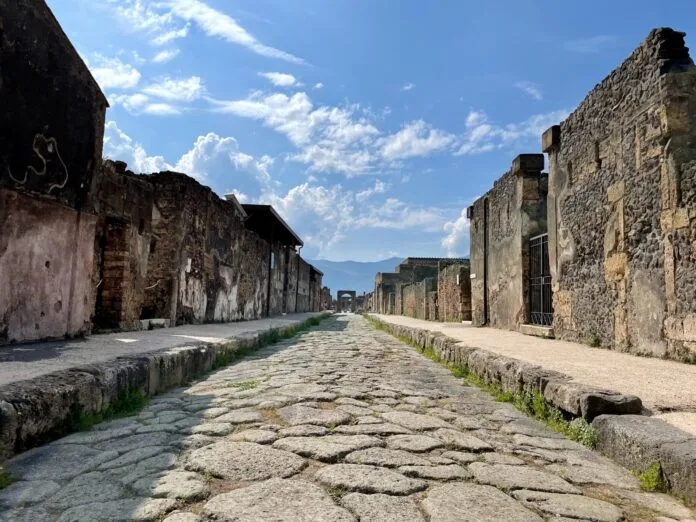
Pompeii lay hidden for more than 1,600 years until its rediscovery in 1748, when excavations began under the Bourbon rulers of Naples. Archaeologists and adventurers were astonished to uncover a city remarkably intact: villas with frescoes still vivid in color, mosaics that gleamed with artistry, and temples, baths, and amphitheaters that looked almost untouched by time.
Pompeii offered something few other archaeological sites could: a direct and immersive snapshot of daily life in antiquity. Unlike Rome or Athens, where centuries of rebuilding transformed the landscape, Pompeii was locked in time.
The Human Presence: Silent Witnesses
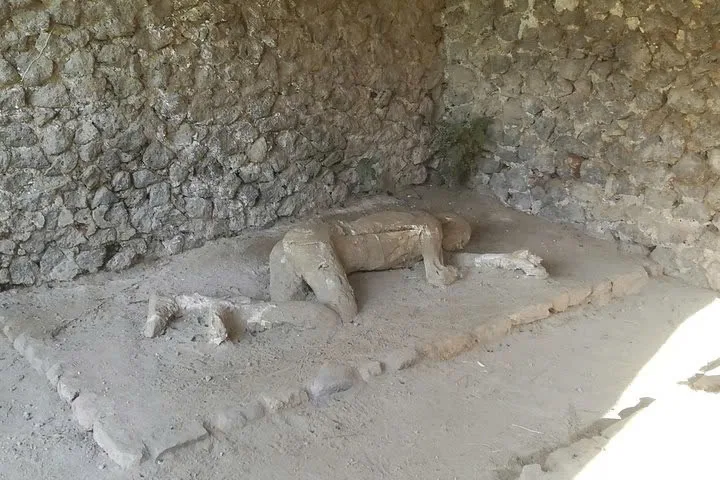
Among the city’s most compelling finds were the remains of its inhabitants. While buildings, art, and objects reveal material culture, the preserved bodies tell deeply human stories. In some houses, families were found clustered together, suggesting they sought safety indoors. On the streets, others appeared to have been caught while attempting to flee.
These remains, initially fragile and fragmented, were difficult for early archaeologists to preserve. The hollow spaces left in the hardened ash after bodies decomposed posed a challenge but also an opportunity.
The Invention of the Plaster Cast Technique
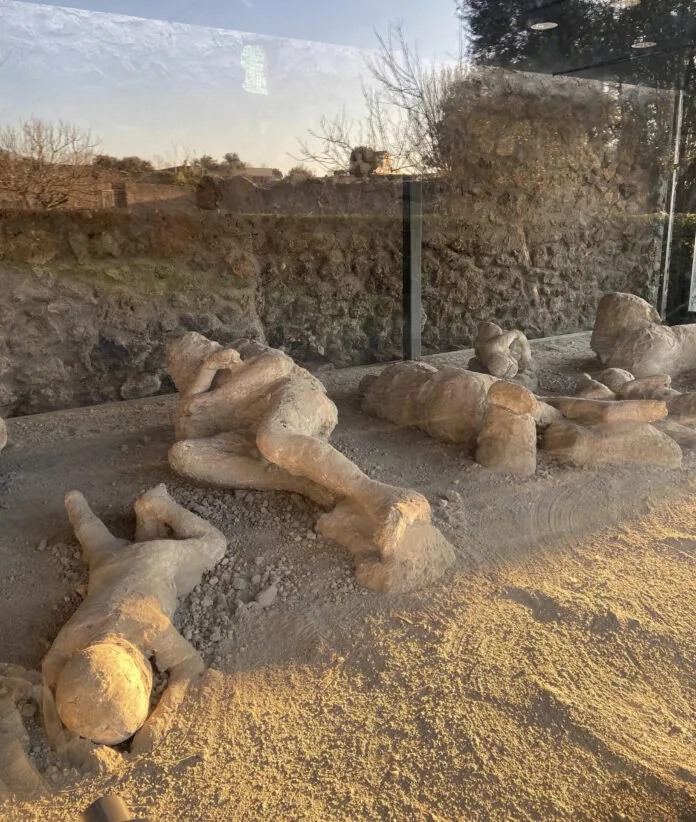
In the mid-19th century, Italian archaeologist Giuseppe Fiorelli introduced a method that revolutionized the study of Pompeii’s human remains. By carefully pouring plaster into the cavities left by decomposed bodies, researchers created lifelike casts. These preserved not only the forms of the victims but also intricate details such as clothing folds, hair, and facial expressions.
The casts turned Pompeii into more than an archaeological site—they transformed it into a place where visitors could connect personally with people from 2,000 years ago. For the first time, the tragedy became visible in individual stories rather than abstract history.
Stories Captured in Plaster
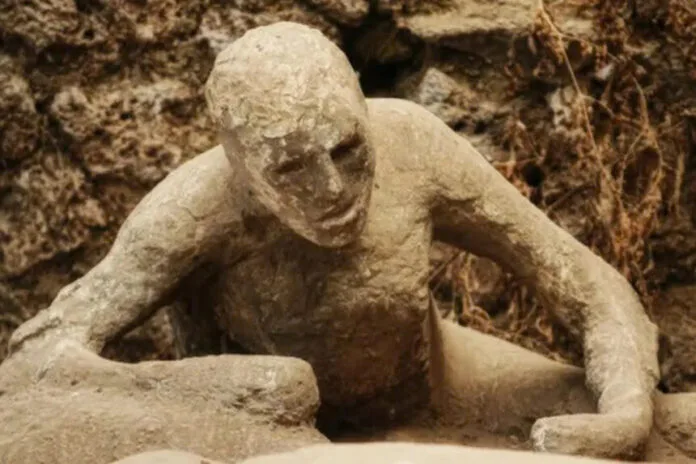
Each plaster cast embodies a moment in time. Archaeologists have documented a wide range of poignant scenes:
-
A mother and child discovered together in a villa basement, their final embrace preserved.
-
A group of people huddled in a storeroom, possibly awaiting rescue that never came.
-
Individuals clutching valuables, such as coins or jewelry, perhaps hoping to carry something of worth into safety.
-
Animals, including dogs and horses, frozen in their final moments alongside humans.
These discoveries highlight not only the catastrophe itself but also the everyday humanity of Pompeii’s residents—their families, their hopes, and their instinctive attempts at survival.
Scientific Advances in Studying Pompeii’s Bodies
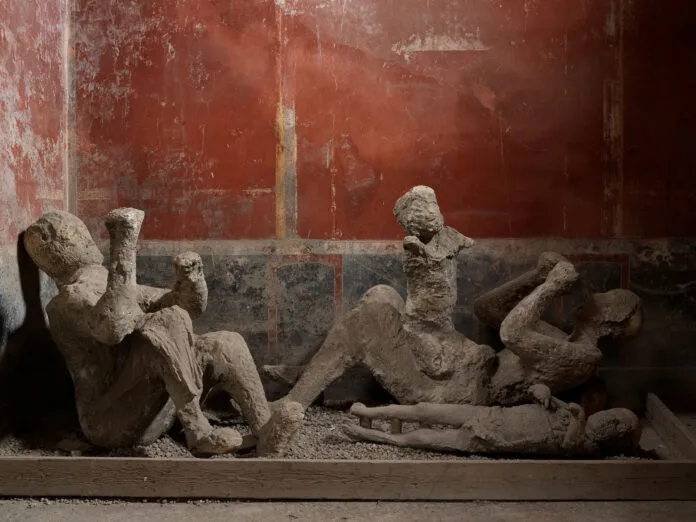
Modern science has expanded what plaster casts alone can reveal. Techniques such as CT scanning, DNA analysis, and isotopic studies are now applied to Pompeii’s remains. These approaches provide insights into:
-
Health and nutrition: Studies of teeth and bones reveal diet patterns, including reliance on grains, seafood, and olives.
-
Diseases: Evidence of arthritis, dental abscesses, and other health conditions show how ancient Romans lived and aged.
-
Social status: Items found with bodies, as well as bone chemistry, help determine differences between elite and common citizens.
-
Genetics and ancestry: Early DNA testing has begun to trace the origins of Pompeii’s inhabitants, offering hints about migration and diversity in the Roman Empire.
In 2022, researchers conducted genomic sequencing on remains from Pompeii, successfully reconstructing the genetic profile of a male inhabitant. This marked a breakthrough in understanding population structures in the Roman world.
Ethics of Display
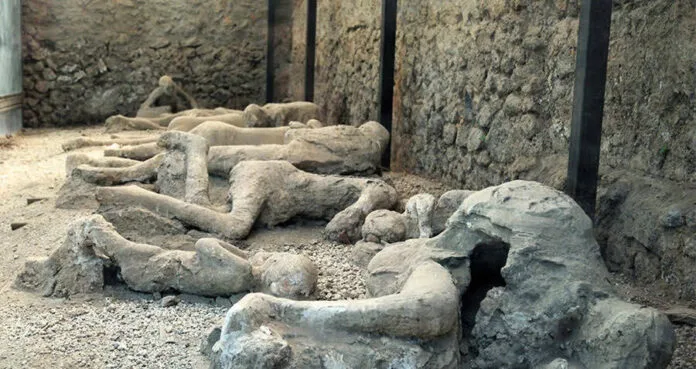
While the plaster casts are invaluable to science and history, they also raise ethical questions. Should human remains be displayed publicly, or should they be treated with more privacy and dignity? Museums and archaeological sites increasingly discuss how to balance respect for the deceased with the educational and cultural value of exhibiting the casts.
In Pompeii, the casts remain central to the visitor experience, but curators frame them carefully, emphasizing remembrance rather than spectacle. This ongoing conversation reflects broader issues in archaeology about cultural sensitivity and human dignity.
Pompeii Beyond the Bodies
Though the plaster casts capture global attention, they are only one part of Pompeii’s rich legacy. Excavations continue to reveal:
-
Remarkable frescoes depicting mythological scenes, banquets, and daily activities.
-
Inscriptions and graffiti, offering insights into politics, commerce, and personal lives.
-
Shops and bakeries, complete with ovens and counters that illustrate the city’s bustling economy.
-
Amphitheaters and baths, showing the importance of leisure and social interaction in Roman society.
Together, these discoveries allow historians to reconstruct Pompeii as a living city rather than simply a site of tragedy.
UNESCO World Heritage and Ongoing Research

Today, Pompeii is a UNESCO World Heritage Site and one of Italy’s most visited destinations. Archaeologists continue to work on new excavations and conservation projects. Advanced tools such as LiDAR scanning, drone mapping, and 3D modeling help preserve structures and plan restorations.
The site remains vulnerable to weathering, tourism, and environmental factors, making preservation a priority. International collaborations aim to safeguard Pompeii for future generations while continuing to reveal new knowledge.
The Legacy of Pompeii’s Inhabitants
Pompeii’s ancient bodies do more than provide archaeological data; they create an emotional bridge between past and present. For scholars, they are essential evidence about Roman life, health, and culture. For visitors, they represent a sobering reminder of the unpredictability of nature and the shared vulnerability of humanity.
Their legacy endures not just in museums and academic journals, but in the cultural imagination—from literature and films to art and historical reflection. The story of Pompeii continues to inspire, caution, and educate.
Conclusion
The plaster casts of Pompeii’s ancient bodies are among the most haunting and meaningful discoveries in archaeology. Preserved in extraordinary detail, they remind us of lives interrupted yet immortalized through volcanic ash. Their stories—whether of families, workers, or children—remain vital threads in the larger tapestry of human history.
Pompeii itself, once devastated, now serves as one of the world’s greatest teachers. Its streets, buildings, and preserved bodies show us not only the fragility of existence but also the enduring value of memory and cultural preservation. As science advances and new excavations continue, the people of Pompeii remain eternal witnesses—guides from the ancient world who connect us to the lessons of resilience, community, and the power of nature.
